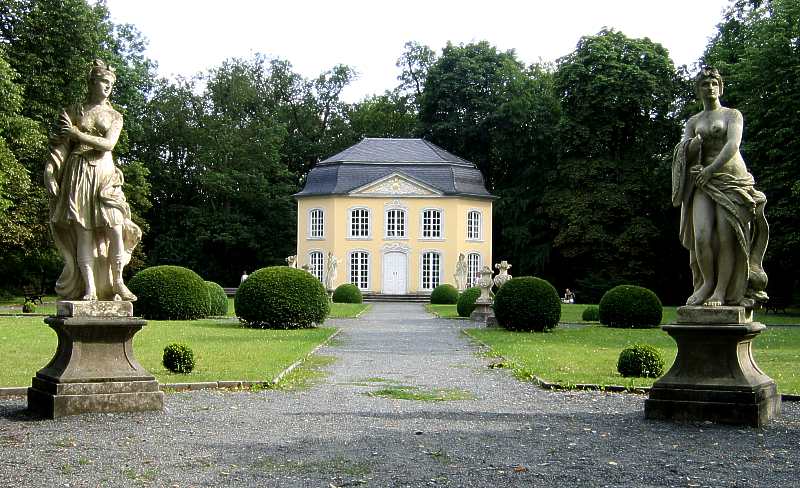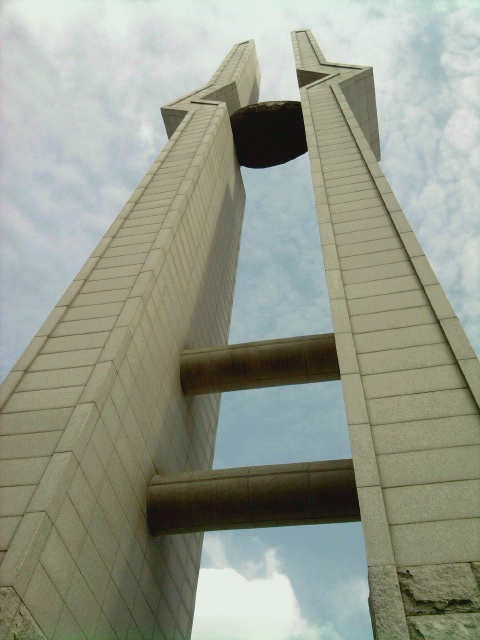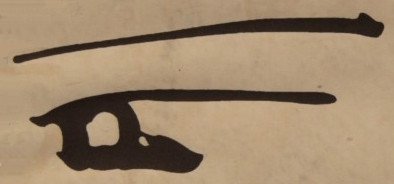|
Bosingak
Bosingak is a large bell pavilion on Jongno in Seoul, South Korea. The bell in Bosingak gives Jongno its name, which literally means "bell street". It was originally constructed in 1396 but destroyed many times by both war and fire. It was designated Bosingak by Emperor Gojong in 1895. In the Joseon Dynasty, this bell was at the center of the castle town. The bell was struck to announce the opening and closing of the four gates around Seoul. At 4 am and 10 pm the bell was struck 33 times and gates were opened and closed. It was used as a fire alarm as well. In modern times, the bell is rung only at midnight on New Year's Eve. Because of the massive number of people who attend this ceremony, Metro trains on Line 1 of the Seoul Subway do not stop at Jonggak Station on New Year's Eve. History It was in 1398 (the 7th year of King Taejo's reign) that the bell was first hung in Hanyang Hanyang may refer to: China *Hanyang District (漢陽區, 汉阳区, ''Hànyáng Qū''), Wuh ... [...More Info...] [...Related Items...] OR: [Wikipedia] [Google] [Baidu] |
Jongno District
Bosingak bell pavilion Jongno District () is a district () in central Seoul, South Korea. It takes its name from a major local street, Jongno, which means "Bell Road". Characteristics Jongno District has been the center of the city for 600 years, since it is where the Joseon dynasty established its capital city. Jongno District is commonly referred to as the face and heart of Korea because of its important roles in the politics, economics, culture, and history as the capital city. Jongno District is home to palaces in which the kings used to reside and work, such as Gyeongbok Palace, Changdeok Palace, Changgyeonggung and Unhyeon Palace. The South Korean president's former residence, the Cheongwadae, is also located in the Jongno District. Due to its rich history, Jongno District attracts visitors and tourists, especially those interested in Korean history and culture. These include the restored Cheonggyecheon stream, the traditional neighborhood of Insa-dong, and the Jongmyo s ... [...More Info...] [...Related Items...] OR: [Wikipedia] [Google] [Baidu] |
Buildings And Structures In Seoul
Seoul (; ; ), officially known as the Seoul Special City, is the capital and largest metropolis of South Korea.Before 1972, Seoul was the ''de jure'' capital of the Democratic People's Republic of Korea (North Korea) as stated iArticle 103 of the 1948 constitution. According to the 2020 census, Seoul has a population of 9.9 million people, and forms the heart of the Seoul Capital Area with the surrounding Incheon metropolis and Gyeonggi province. Considered to be a global city and rated as an Alpha – City by Globalization and World Cities Research Network (GaWC), Seoul was the world's fourth largest metropolitan economy in 2014, following Tokyo, New York City and Los Angeles. Seoul was rated Asia's most livable city with the second highest quality of life globally by Arcadis in 2015, with a GDP per capita (PPP) of around $40,000. With major technology hubs centered in Gangnam and Digital Media City, the Seoul Capital Area is home to the headquarters of 15 ''Fortu ... [...More Info...] [...Related Items...] OR: [Wikipedia] [Google] [Baidu] |
Hanyang (Korea)
Seoul (; ; ), officially known as the Seoul Special City, is the capital and largest metropolis of South Korea.Before 1972, Seoul was the ''de jure'' capital of the Democratic People's Republic of Korea (North Korea) as stated iArticle 103 of the 1948 constitution. According to the 2020 census, Seoul has a population of 9.9 million people, and forms the heart of the Seoul Capital Area with the surrounding Incheon metropolis and Gyeonggi province. Considered to be a global city and rated as an Alpha – City by Globalization and World Cities Research Network (GaWC), Seoul was the world's fourth largest metropolitan economy in 2014, following Tokyo, New York City and Los Angeles. Seoul was rated Asia's most livable city with the second highest quality of life globally by Arcadis in 2015, with a GDP per capita (PPP) of around $40,000. With major technology hubs centered in Gangnam and Digital Media City, the Seoul Capital Area is home to the headquarters of 15 ''Fortu ... [...More Info...] [...Related Items...] OR: [Wikipedia] [Google] [Baidu] |
Seoul
Seoul (; ; ), officially known as the Seoul Special City, is the capital and largest metropolis of South Korea.Before 1972, Seoul was the ''de jure'' capital of the Democratic People's Republic of Korea (North Korea) as stated iArticle 103 of the 1948 constitution. According to the 2020 census, Seoul has a population of 9.9 million people, and forms the heart of the Seoul Capital Area with the surrounding Incheon metropolis and Gyeonggi province. Considered to be a global city and rated as an Alpha – City by Globalization and World Cities Research Network (GaWC), Seoul was the world's fourth largest metropolitan economy in 2014, following Tokyo, New York City and Los Angeles. Seoul was rated Asia's most livable city with the second highest quality of life globally by Arcadis in 2015, with a GDP per capita (PPP) of around $40,000. With major technology hubs centered in Gangnam and Digital Media City, the Seoul Capital Area is home to the headquarters of 15 ''Fo ... [...More Info...] [...Related Items...] OR: [Wikipedia] [Google] [Baidu] |
Jongno
Jongno or Jong-ro ( ko, 종로), literally meaning "Bell Street", is a trunk road and one of the oldest major east–west thoroughfares in Seoul, South Korea. Jongno connects Gwanghwamun Plaza to Dongdaemun. The area surrounding Jongno is a part of Downtown Seoul and one of the most prominent cultural, historical, and financial areas. Many important landmarks are located along its length, including the Bigak pavilion at Sejongno, the Bosingak belfry (hence the street's name), Tapgol Park (Pagoda Park), the Jongmyo royal ancestral shrine, and the Dongdaemun (Great East Gate). Seoul Subway Line 1 passes under Jongno. The western end of Jongno is serviced by Gwanghwamun Station (Seoul Subway Line 5), and Jongno 3-ga Station is serviced by Subway Lines 1, 3, and 5. Because of the multitude of shops, stores, and groceries along the area, the word "Jongno" is often used in the Korean language to express "Town Square." Famous places in Jongno * Many of Korea's largest bookstore ... [...More Info...] [...Related Items...] OR: [Wikipedia] [Google] [Baidu] |
New Year's Eve
In the Gregorian calendar, New Year's Eve, also known as Old Year's Day or Saint Sylvester's Day in many countries, is the evening or the entire day of the last day of the year, on 31 December. The last day of the year is commonly referred to as “New Year’s Eve”. In many countries, New Year's Eve is celebrated with dancing, eating, drinking, and watching or lighting fireworks. Some Christians attend a watchnight service. The celebrations generally go on past midnight into New Year's Day, 1 January. The Line Islands (part of Kiribati) and Tonga, in the Pacific Ocean, are the first places to welcome the New Year, while American Samoa, Baker Island and Howland Island (part of the United States Minor Outlying Islands) are among the last. By region Africa Algeria In Algeria, New Year's Eve (french: Réveillon; '' ar, Ra’s al-‘Ām'') is usually celebrated with family and friends. In the largest cities, such as Algiers, Constantine, Annaba, Oran, Sétif, and Béjaïa ... [...More Info...] [...Related Items...] OR: [Wikipedia] [Google] [Baidu] |
Pavilions
In architecture, ''pavilion'' has several meanings: * It may be a subsidiary building that is either positioned separately or as an attachment to a main building. Often it is associated with pleasure. In palaces and traditional mansions of Asia, there may be pavilions that are either freestanding or connected by covered walkways, as in the Forbidden City ( Chinese pavilions), Topkapi Palace in Istanbul, and in Mughal buildings like the Red Fort. * As part of a large palace, pavilions may be symmetrically placed building ''blocks'' that flank (appear to join) a main building block or the outer ends of wings extending from both sides of a central building block, the ''corps de logis''. Such configurations provide an emphatic visual termination to the composition of a large building, akin to bookends. The word is from French (Old French ) and it meant a small palace, from Latin (accusative of ). In Late Latin and Old French, it meant both ‘butterfly’ and ‘tent’, becaus ... [...More Info...] [...Related Items...] OR: [Wikipedia] [Google] [Baidu] |
Bells (percussion)
Bells may refer to: * Bell, a musical instrument Places * Bells, North Carolina * Bells, Tennessee * Bells, Texas * Bells Beach, Victoria, an internationally famous surf beach in Australia * Bells Corners, Ontario Music * Bells, directly struck percussion instruments * Glockenspiel, also known as bells * The Bells (band), a Canadian rock band from the 1970s * ''Bells'' (album), an album by Albert Ayler * ''The Bells'' (Lou Reed album), an album by Lou Reed * The Bells (symphony), or in Russian "Kolokola," a choral work by Rachmaninov based on the poem by Edgar Allan Poe *"Bells", a song by Fred Wesley and Horny Horns from the album '' The Final Blow'' Film and television * "Bells" (''Blackadder''), an episode of the British sitcom ''Blackadder II'' * "Bells", an episode of ''New Girl'' * ''Bells'', a 1982 Canadian-American film also known as ''Murder by Phone'' Brands and enterprises * Bell's Brewery, a brewery in Michigan, United States * Bell's whisky, a blended whi ... [...More Info...] [...Related Items...] OR: [Wikipedia] [Google] [Baidu] |
Gwangju
Gwangju () is South Korea's sixth-largest metropolis. It is a designated metropolitan city under the direct control of the central government's Home Minister. The city was also the capital of South Jeolla Province until the provincial office moved to the southern village of Namak in Muan County in 2005 because Gwangju was promoted to a metropolitan city and was independent of South Jeolla province. Its name is composed of the words ''Gwang'' () meaning "light" and ''Ju'' () meaning "province". Gwangju was historically recorded as ''Muju'' (), in which "Silla merged all of the land to establish the provinces of Gwangju, Ungju, Jeonju, Muju and various counties, plus the southern boundary of Goguryeo and the ancient territories of Silla" in the ''Samguk Sagi.'' In the heart of the agricultural Jeolla region, the city is also famous for its rich and diverse cuisine. History The city was established in 57 BC. It was one of the administrative centers of Baekje during the Three ... [...More Info...] [...Related Items...] OR: [Wikipedia] [Google] [Baidu] |
Bell (instrument)
A bell is a directly struck idiophone percussion instrument. Most bells have the shape of a hollow cup that when struck vibrates in a single strong strike tone, with its sides forming an efficient resonator. The strike may be made by an internal "clapper" or "uvula", an external hammer, or—in small bells—by a small loose sphere enclosed within the body of the bell (jingle bell). Bells are usually cast from bell metal (a type of bronze) for its resonant properties, but can also be made from other hard materials. This depends on the function. Some small bells such as ornamental bells or cowbells can be made from cast or pressed metal, glass or ceramic, but large bells such as a church, clock and tower bells are normally cast from bell metal. Bells intended to be heard over a wide area can range from a single bell hung in a turret or bell-gable, to a musical ensemble such as an English ring of bells, a carillon or a Russian zvon which are tuned to a common scale and instal ... [...More Info...] [...Related Items...] OR: [Wikipedia] [Google] [Baidu] |
Taejo Of Joseon
Taejo of Joseon (4 November 1335 – 27 June 1408), born Yi Seong-gye (), was the founder and first ruler of the Joseon dynasty of Korea. After ascending to the throne, he changed his name to Yi Dan (), and reigned from 1392 to 1398. He was the main figure in the overthrowing of the Goryeo dynasty. Taejo abdicated in 1398 during a strife between his sons and died in 1408. When Taejo became king, he emphasized continuity over change. No new institutions and no massive purges occurred during his reign. The dynasty that he established was mostly dominated by the same ruling families and officials that had served the previous regime. He re-established amicable relations with Japan and improved relations with Ming China. Biography Early life Taejo's father was Yi Ja-chun, an official of Korean ethnicity serving the Mongol-led Yuan dynasty. Taejo's mother, Lady Choe, was of Chinese origin from a prominent family originally from Deungju ( Anbyeon County) in present-day North Ko ... [...More Info...] [...Related Items...] OR: [Wikipedia] [Google] [Baidu] |


.png)





